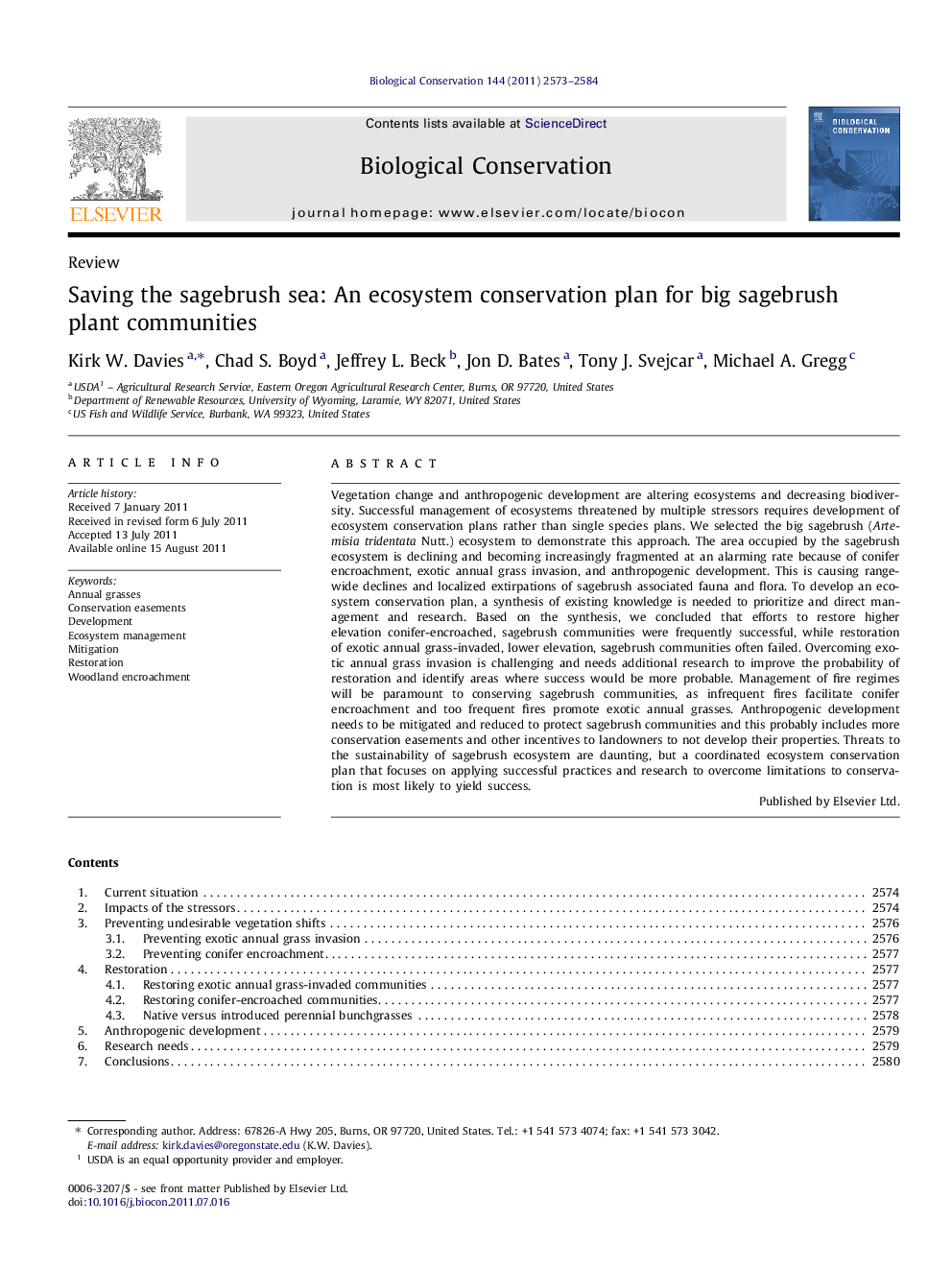| Article ID | Journal | Published Year | Pages | File Type |
|---|---|---|---|---|
| 4385382 | Biological Conservation | 2011 | 12 Pages |
Vegetation change and anthropogenic development are altering ecosystems and decreasing biodiversity. Successful management of ecosystems threatened by multiple stressors requires development of ecosystem conservation plans rather than single species plans. We selected the big sagebrush (Artemisia tridentata Nutt.) ecosystem to demonstrate this approach. The area occupied by the sagebrush ecosystem is declining and becoming increasingly fragmented at an alarming rate because of conifer encroachment, exotic annual grass invasion, and anthropogenic development. This is causing range-wide declines and localized extirpations of sagebrush associated fauna and flora. To develop an ecosystem conservation plan, a synthesis of existing knowledge is needed to prioritize and direct management and research. Based on the synthesis, we concluded that efforts to restore higher elevation conifer-encroached, sagebrush communities were frequently successful, while restoration of exotic annual grass-invaded, lower elevation, sagebrush communities often failed. Overcoming exotic annual grass invasion is challenging and needs additional research to improve the probability of restoration and identify areas where success would be more probable. Management of fire regimes will be paramount to conserving sagebrush communities, as infrequent fires facilitate conifer encroachment and too frequent fires promote exotic annual grasses. Anthropogenic development needs to be mitigated and reduced to protect sagebrush communities and this probably includes more conservation easements and other incentives to landowners to not develop their properties. Threats to the sustainability of sagebrush ecosystem are daunting, but a coordinated ecosystem conservation plan that focuses on applying successful practices and research to overcome limitations to conservation is most likely to yield success.
► We developed a conservation plan for the sagebrush ecosystem. ► Restoration of conifer encroached-sagebrush communities is often successful. ► Restoration of exotic annual grass-invaded sagebrush communities often fails. ► Additional research is needed to overcome the exotic annual grass problem. ► Anthropogenic development needs to be reduced and mitigated.
